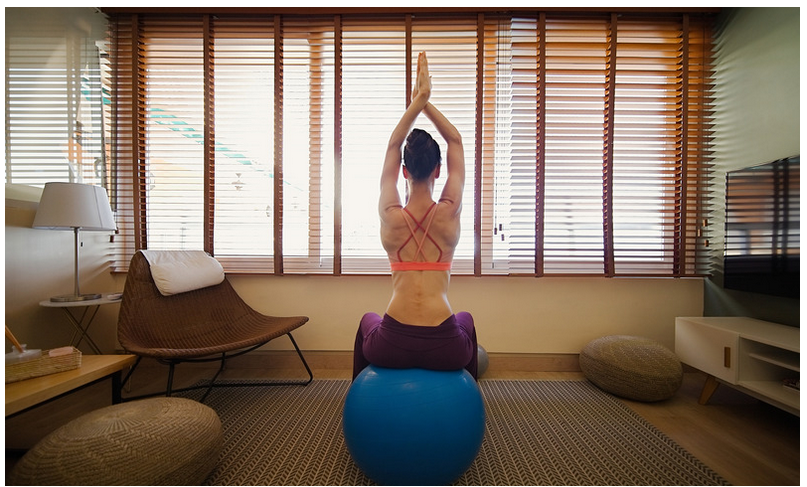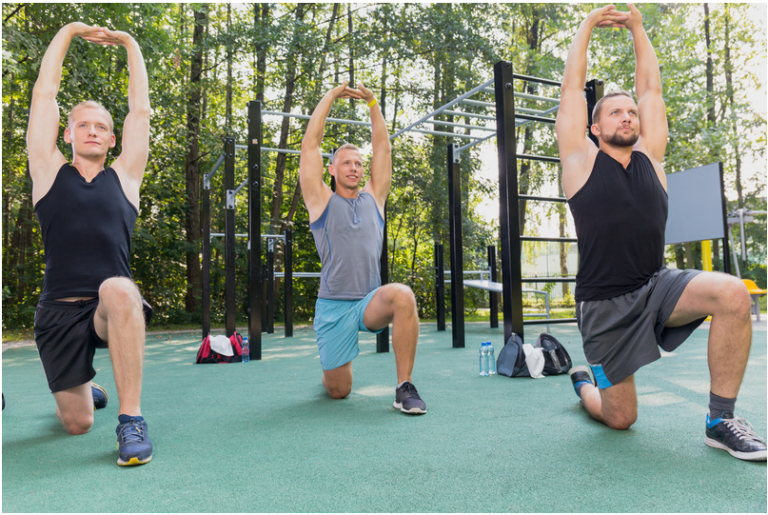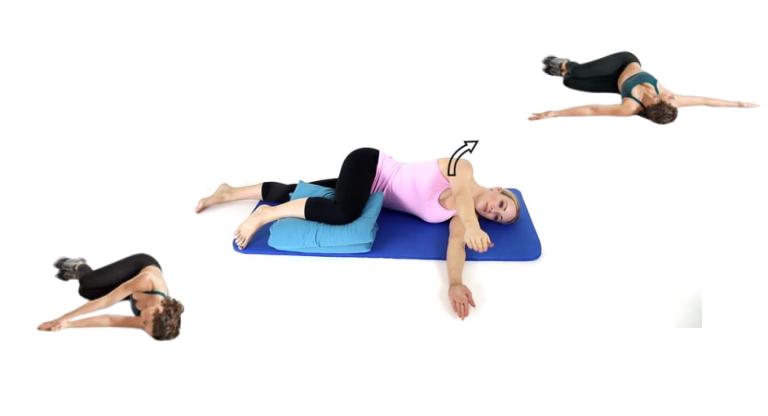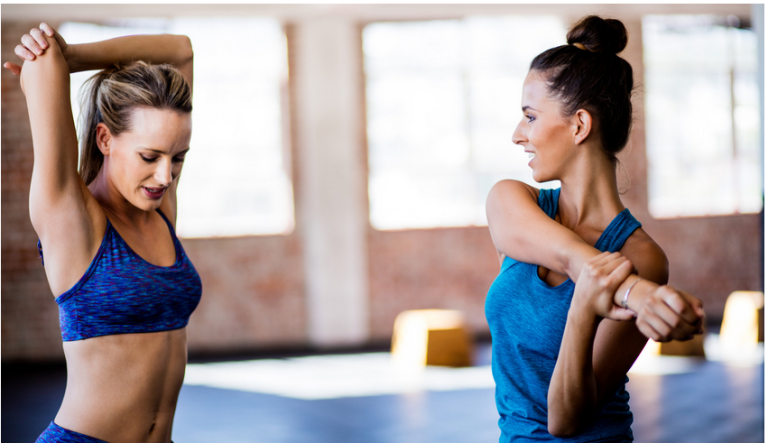
What Sets Active Isolated Stretching Apart from Other Stretching Exercises?

Active isolated stretching is a technique that has gained popularity in recent years due to its effectiveness in increasing flexibility and range of motion. This technique is different from other stretching exercises in several ways. For instance, it involves holding each stretch for only a short period, typically no more than two seconds. Additionally, active isolated stretching requires external objects such as ropes, straps, or other tools to help isolate specific muscle groups.
The principles of active isolated stretching involve a specific sequence of movements that target individual muscles or muscle groups. This technique involves stretching a muscle to its maximum length, holding the stretch for a short period, and then releasing it. This process is repeated several times, increasing the muscle’s flexibility and range of motion.
Key Takeaways
- Active isolated stretching involves holding each stretch for only a short period and requires the use of external objects to help isolate specific muscle groups.
- The principles of active isolated stretching involve a specific sequence of movements that target individual muscles or muscle groups.
- Active isolated stretching is an effective technique for increasing flexibility and range of motion, and it can be implemented in fitness programs to help individuals achieve their fitness goals.
Want to know how many exercises stretch your whole body? Learn the best full-body stretches and their benefits in this article: How Many Exercises Encompass Stretching in the Human Body?.
Principles of Active Isolated Stretching
Definition and Mechanism
Active Isolated Stretching (AIS) is a stretching exercise designed to improve flexibility and range of motion. It is a specific stretching program that is performed in a specific way. The main principle of AIS is using a gentle, repetitive motion to stretch a muscle for no more than two seconds at a time. This is done to avoid triggering the stretch reflex, which can cause the muscle to contract and resist the stretch.
The mechanism of AIS is based on the principle of reciprocal inhibition. This means that when one muscle is contracted, the opposing muscle is relaxed. By contracting the opposing muscle, the target muscle is relaxed and can be stretched more effectively. This is why AIS is often referred to as neuromuscular stretching.
Contrast with Static and Dynamic Stretching

AIS differs from static stretching, which involves holding a stretch for an extended period. Static stretching can decrease muscle performance and increase the risk of injury. AIS, on the other hand, increases joint mobility and reduces the risk of injury.
AIS is also different from dynamic stretching, which involves moving through a range of motion in a controlled manner. Dynamic stretching can be effective for warming up before exercise, but it provides a different level of flexibility and range of motion than AIS.
The term “isolated” in AIS refers to the fact that each stretch is performed on a specific muscle or group of muscles. This allows for a more targeted and effective stretch.
In summary, AIS is a specific stretching program that uses gentle, repetitive motion to improve flexibility and range of motion. It is based on the principle of reciprocal inhibition and is different from static and dynamic stretching. Its focus on isolated stretching allows for a more targeted and effective stretch.
Benefits and Effectiveness
Active isolated stretching (AIS) is a type of stretching that involves holding a stretch for only a few seconds and then releasing it. It is a more specific type of active stretching designed to improve flexibility, neuromuscular coordination, and balance. Here are some of the benefits of AIS:
Enhancing Flexibility
Flexibility is defined as the range of motion of a joint or group of joints. Stretching is one of the most effective ways to improve flexibility. AIS is particularly effective at enhancing flexibility because it targets specific muscle groups. By stretching these muscles, AIS can help to lengthen them and increase their range of motion.
Influence on Neuromuscular Coordination
AIS can also have a positive influence on neuromuscular coordination. This is because it involves the contraction of the opposing muscle group during the stretch. This contraction helps to activate the muscle spindles and Golgi tendon organs, which are sensory receptors in the muscle that send signals to the brain. This feedback helps to improve the communication between the brain and the muscles, which can result in improved neuromuscular coordination.
In conclusion, AIS is an effective way to improve flexibility and neuromuscular coordination. It is a more specific type of active stretching that targets specific muscle groups and involves the contraction of the opposing muscle group during the stretch. Incorporating AIS into your stretching routine can improve your overall flexibility and reduce your risk of injury.
Implementation in Fitness Programs
Active Isolated Stretching (AIS) is a specific stretching program that can be incorporated into a personal fitness program. When developing a successful personal fitness program, the FITT principle can be applied to ensure that the program is effective.
Incorporating FITT Principle
The FITT principle stands for Frequency, Intensity, Time, and Type. This principle can be used to create a plan that includes the appropriate amount of exercise for an individual’s fitness goals. For example, if an individual wants to improve their flexibility, they may incorporate AIS into their program. The frequency of the AIS stretches can be increased as the individual progresses in their program. The intensity of the stretches can also be increased gradually over time as the individual becomes more flexible. The time spent on each stretch can be adjusted to meet the individual’s needs. Finally, the type of stretch can be tailored to the individual’s specific fitness goals.
Selecting Cardiofitness Activities
When selecting cardio fitness activities, it is important to choose enjoyable activities that can be performed regularly. Some examples of cardio fitness activities include running, cycling, swimming, and dancing. A plan for choosing a cardio fitness activity can involve trying different activities to find one that is enjoyable and sustainable.
Order of Workout Activities
The order of workout activities can also impact the effectiveness of a personal fitness program. Doing exercise can change the body and the way it functions. For example, if an individual wants to improve their flexibility, they may incorporate AIS stretches at the beginning of their workout. This can help to warm up the muscles and prepare them for more intense exercise later in the workout.
Overall, incorporating AIS into a personal fitness program can be an effective way to improve flexibility and overall fitness. When combined with the FITT principle, AIS can help individuals reach their fitness goals safely and sustainably. However, it is important to remember that many different stretching techniques are available, such as Zaichik stretching techniques, and it is important to choose the technique best suited to an individual’s needs and goals.
Personal Factors Influencing Flexibility
Flexibility is an important aspect of physical fitness and is influenced by several personal factors. This section will discuss two major factors that affect flexibility: genetic factors and lifestyle choices.
Genetic Factors
Genetic factors play a significant role in determining our flexibility. Some people are naturally more flexible than others due to their genetics. For example, some people may have longer muscles and tendons, while others may have shorter ones. These differences can affect the range of motion in our joints and overall flexibility.
However, genetics are not the only factor that determines our flexibility. Regardless of our genetic makeup, we can still improve our flexibility through stretching and other exercises. Therefore, while we cannot change our genetics, we can still work to improve our flexibility through proper training and exercise.
Lifestyle Choices
While we cannot change our genetics, we have full control over other aspects of our lives that can deeply affect our wellness. Lifestyle choices such as diet, exercise, and stress management affect our flexibility.
For example, stretching exercises like the quad stretch can help improve leg flexibility. However, if we are not getting enough nutrients in our diet, our muscles may be unable to repair and grow properly, limiting our flexibility. Similarly, if we are not getting enough exercise or dealing with high stress levels, our muscles may become tense and tight, limiting our flexibility.
Therefore, it is important to make healthy lifestyle choices that support our overall wellness and flexibility. Eating a balanced diet, regular exercise and managing stress can all help improve our flexibility and overall physical fitness.
Frequently Asked Questions
How does the active isolated stretching technique differ from traditional stretching methods?
Active isolated stretching (AIS) is a specific stretching program developed by Aaron Mattes over 30 years ago. It differs from traditional stretching methods in isolating specific muscles and holding each stretch for only two seconds [1]. This allows for a more targeted approach to stretching, which can help to improve flexibility and range of motion more effectively than traditional stretching methods.
What are the benefits of using active isolated stretching over other stretch routines?
AIS is a technique that helps people maximize the effectiveness of stretching without causing discomfort, which keeps many of us away from it [2]. It can improve flexibility, increase circulation, reduce muscle soreness, and prevent injury. Additionally, AIS can help improve posture and balance, which can be especially beneficial for athletes and physically active athletes.
Can active isolated stretching improve flexibility more effectively than static stretching?
Yes, active isolated stretching can improve flexibility more effectively than static stretching. This is because AIS involves isolating specific muscles and holding each stretch for only two seconds [3]. This allows for a more targeted approach to stretching, which can help to improve flexibility and range of motion more effectively than static stretching.
Should active isolated stretches be performed before or after a workout session?
Active isolated stretches can be performed both before and after a workout session. However, performing AIS after a workout session is generally recommended, as this can help reduce muscle soreness and improve recovery time [4].
What are the key principles that make active isolated stretching unique?
The key principles that make active isolated stretching unique include using specific muscle groups, using a two-second stretch hold, and using active movement to facilitate the stretch [5]. Using these principles allows for a more targeted and effective approach to stretching.
How do the duration and repetition guidelines of active isolated stretching compare to those of conventional stretching?
The duration and repetition guidelines of active isolated stretching differ from those of conventional stretching. In AIS, stretches are held for only two seconds and repeated 8-10 times per muscle group [6]. This differs from conventional stretching, where stretches are typically held for 20-30 seconds and repeated 2-4 times per muscle group.



